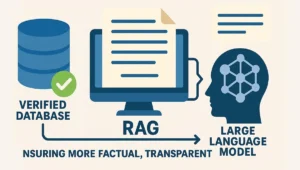Explainable artificial intelligence (XAI) aims to make AI systems more transparent, interpretable, and accountable, which is crucial for building trust in AI systems and their decisions. The benefits of XAI in research include improved trustworthiness and transparency, enhanced fairness and accountability, better debugging and understanding of complex systems, and greater adaptability and traceability. The paper discusses various applications of XAI in research, including medicine and healthcare, natural language processing, and computer vision.
Dive deeper into this transformative international at Researchly now
Table of Contents
History of XAI?
The history of XAI can be traced back to the early days of AI research in the 1950s and 1960s. At that time, AI systems were mostly based on rule-based systems, which were relatively easy to understand and interpret. However, as AI evolved and became more powerful, researchers began to develop more complex and opaque models like neural networks and deep learning systems.
In the late 1990s and early 2000s, researchers began to recognize the importance of making AI systems more interpretable and transparent. The concept of explainable AI (XAI) began to take off.
In 2011, the DARPA XAI program was launched to support research on XAI for defense applications. In 2017, IBM released its AI Fairness 360 toolkit, which included algorithms for detecting and mitigating bias in AI systems. Google released Tensor Flow Debugger, a tool for debugging and visualizing neural networks.
In 2018, The LIME (Local Interpretable Model-Agnostic Explanations) algorithm was introduced, which provides explanations for the predictions of any classifier in an interpretable and faithful manner. In 2020, The AI Explainability 360 toolkit, an open-source toolkit for XAI, was released by IBM.
What is XAI and how is it different from AI?
XAI, or Explainable Artificial Intelligence refers to a set of processes and methods that enable human users to understand and trust the results and outputs generated by machine learning algorithms.
One of the key challenges with traditional AI systems is that they can be difficult to understand. For example, deep learning models like neural networks are known for being “black boxes” – we can see their inputs and outputs, but it’s difficult to understand how they make decisions.
What sets “regular” AI apart from explainable AI (XAI)? While traditional AI employs machine learning algorithms to produce results, the intricacies of how these outcomes are achieved often remain a mystery even to the system architects. This lack of transparency can pose challenges in verifying accuracy and maintaining control, accountability, and auditability. Conversely, XAI is designed with techniques and methods that provide clear explanations for each decision made during the machine learning process. This transparency ensures that every step can be traced and understood, enhancing reliability and trust in the AI system.
In this process, we should not forget that XAI is a subset of AI and due to its usefulness, it can be used as a supplement in artificial intelligence tools. Using XAI is an added value to AI. XAI provides insights into AI models’ reasoning processes, helping debug and improve their performance. Additionally, XAI can help identify and address potential biases in AI models and promote fairness and ethical outcomes.
Why XAI Matters and How It Works
With AI systems playing a huge role in our daily lives, it is important to understand how decisions are made. XAI addresses the black box problem of traditional AI models by making their inner workings more transparent. This fosters trust and accountability by:
- Prevent AI biases: XAI techniques scrutinize training data to uncover potential biases or limitations that might influence the model’s decisions, promoting fairness and reliability.
- AI Breakdown: Certain XAI methods employ simpler, inherently interpretable models, or decompose complex models to make them easier to understand.
- Explaining After the Fact: For even the most complex models, XAI can elucidate specific outputs by highlighting influential features in the input data or demonstrating how different components of the model contributed to the outcome.
By implementing these techniques, XAI ensures we understand how AI arrives at decisions, leading to fairer outcomes, enhanced development, regulatory compliance, and ultimately, responsible and trustworthy AI.
XAI technologies and techniques
XAI is developed using a variety of technologies and techniques. Here are a few examples:
- Machine learning interpretability techniques: These techniques, such as LIME, SHAP, and DeepLIFT, help to explain the behavior of machine learning models in an interpretable and meaningful way.
- Natural language processing (NLP) techniques: NLP techniques can be used to generate human-readable explanations of AI decisions and behaviors, such as by using natural language generation (NLG) to produce text explanations.
Review of XAI applications
XAI has several important uses in AI tools and for researchers.
Improving transparency: can help AI developers and users understand how AI systems are making decisions, which can improve transparency and accountability.
Detecting and mitigating bias: By explaining the decisions and behavior of AI systems, XAI can help to identify and mitigate bias in AI systems.
Debugging and improving AI systems: XAI can help developers identify and fix errors or bugs in AI systems, which can lead to more reliable and effective systems.
Here are some examples of how XAI is being applied in research:
Medicine and healthcare?
Here are a few examples of how XAI is being applied in medicine and healthcare:
- Diagnosis: XAI can help explain the decisions and predictions made by AI systems that are used for diagnosis, such as in cancer detection and disease prediction.
- Drug discovery: XAI can be used to explain the behavior of AI systems that are used for drug discovery and design, which can help researchers understand the properties and efficacy of new drugs.
- Treatment: XAI can help explain the decisions and predictions made by AI systems that are used for treatment recommendations, such as in personalized medicine.
Understanding Research Model Outputs:
Many research fields rely on complex models, like climate simulations or protein folding models. XAI can help researchers understand how these models arrive at their predictions. This allows for:
- Identifying Potential Biases: By analyzing the model’s decision-making process, XAI can reveal hidden biases in the data or the model itself. This is crucial for ensuring the research findings are reliable and unbiased.
- Refining the Model: XAI can pinpoint areas where the model’s reasoning is flawed. Researchers can then use this information to improve the model’s accuracy and performance.
Data Analysis and Feature Importance:
XAI techniques like feature attribution can help researchers understand which features in their data are most influential on the research outcomes. This allows them to:
- Focus on Crucial Factors: By identifying the key features driving the results, researchers can delve deeper into those factors and refine their research questions.
- Identify Unexpected Relationships: XAI can sometimes reveal unexpected connections between variables, prompting new research avenues.
Collaboration and Knowledge Sharing:
Imagine AI-powered tools that can analyze research papers and summarize key findings, identify relevant research gaps, or even suggest potential collaborators based on research focus. XAI could be instrumental in developing intelligent research assistants that facilitate collaboration and knowledge sharing among researchers.
Overall Benefits:
- Transparency and Reproducibility: XAI can help research become more transparent by explaining the role of AI models and facilitating the reproduction of research findings.
- Trust and Credibility: By using explainable AI models, researchers can build trust in their findings, both from peers and the public.
- Efficiency and Innovation: XAI can streamline the research process by providing insights into complex data and models, leading to faster and more innovative discoveries.
How XAI is being applied in natural language processing?
XAI can be applied in NLP in several ways, including:
- Explainable text generation: XAI can be used to explain the decisions and predictions made by language models that generate text, such as by explaining why a specific word was chosen or how a sentence was constructed.
- Interpretable sentiment analysis: XAI can be used to explain the decisions and predictions made by sentiment analysis models, which can help researchers understand the reasons why a certain sentiment was assigned to a piece of text.
- Explainable question answering: XAI can be used to explain the decisions and predictions made by question-answering systems, which can help researchers understand why a certain answer was chosen or how the system arrived at a conclusion.
- Explaining text classification: XAI can be used to explain the decisions and predictions made by text classification systems, such as by explaining why a certain piece of text was classified as belonging to a specific category or topic.
Overall, XAI can be used to make NLP models more transparent and understandable, which can help researchers improve the performance and reliability of these systems.
how XAI is being applied in computer vision?
XAI is being applied in computer vision in several ways:
- Visual explanations: XAI can be used to generate heat maps or saliency maps that highlight the regions of an image that are most important for the AI system’s decision or prediction.
- Attention-based explanations: XAI can be used to explain the attention mechanisms of deep learning models in computer vision, which can help researchers understand which features or regions of an image are most important for a specific task, such as object detection or classification.
- Semantic segmentation explanations: XAI can be used to explain the decisions and predictions made by semantic segmentation models in computer vision. This can help researchers understand how the system is segmenting and labeling different objects in an image.
- Generative models: XAI can be used to explain the decisions and predictions made by generative models in computer vision, such as by explaining why a certain image was generated or how the system arrived at a specific image.
- Motion prediction explanations: XAI can be used to explain the decisions and predictions made by motion prediction models in computer vision, which can help researchers understand how the system is predicting the future trajectories and movements of objects in a scene.
Overall, XAI can be used to make computer vision systems more transparent and interpretable, which can help researchers understand the behavior of these systems and improve their performance.
Self-Explainable AI Models for Decisions
In recent developments, Self-Explainable AI has become a key theme in advancing transparency and interpretability. These models are explicitly designed to provide human-understandable explanations for their decisions. They offer confidence levels for both the decision and explanation.
Notable examples include:
- self-explainable deep neural networks
- graph neural networks
- prototypical classifiers
- prototype-based neural networks
- ProtoVAE
- Xpdeep
Each of these models contributes to bridging the gap between AI decision-making and human understanding. They pave the way for a more accountable and interpretable AI future.
These models not only provide interpretability but also empower users by offering them insight into AI decision-making processes.
My opinion on XAI and its future
The emerging field of Explainable Artificial Intelligence (XAI) is positioned to have a substantial impact on the landscape of research, affecting both quantitative and qualitative methodologies. In quantitative research, XAI enables researchers to delve into the inner workings of intricate models, such as climate simulations or economic models. This enhanced transparency instills confidence in the models’ forecasts and empowers researchers to detect potential biases within the data or model framework itself.
Moreover, techniques like feature attribution in XAI can identify the data features with the most significant impact on research outcomes, assisting researchers in prioritizing essential factors and potentially uncovering novel research inquiries.
In qualitative research, XAI can be utilized to scrutinize extensive datasets, like interview transcripts or social media content, in conjunction with conventional methods. By elucidating the rationale behind AI-generated findings, XAI enriches qualitative research by offering supplementary insights and potentially unveiling unforeseen connections within the data. These revelations can stimulate new research paths that might not have been evident through traditional approaches alone.
Ultimately, XAI has the potential to inaugurate a new era of research marked by transparency, reproducibility, and trust. By providing lucid explanations for AI-facilitated analyses, XAI bolsters confidence in research outcomes. Moreover, research assistants powered by XAI can expedite data analysis and knowledge dissemination among researchers, fostering a more collaborative and effective research milieu. Nevertheless, it is essential to recognize that XAI is still in development, and not all AI models employed in research can be fully elucidated presently.
Researchers must exercise caution when selecting XAI methods, ensuring they are suitable for the particular model and research query at hand. Furthermore, human expertise remains invaluable. While XAI is a potent instrument, it cannot replace critical thinking abilities. Researchers must utilize their expertise to interpret XAI results and make deductions based on all accessible evidence. In summary, the fusion of XAI and human researchers presents significant potential for the advancement of scientific exploration and our comprehension of the world.
Conclusion
In conclusion, Explainable Artificial Intelligence is a critical tool for advancing the field of research. By making AI systems more transparent and interpretable, XAI can help researchers ensure that these systems are trustworthy, fair, and ethical. XAI also has the potential to improve collaboration between humans and AI systems, promote responsible AI usage, and enhance our understanding of complex phenomena. As AI continues to evolve and become more integrated into our daily lives, XAI will play an increasingly important role in ensuring that these systems are safe, effective, and aligned with human values.
References:
- Ali, S., Abuhmed, T., El-Sappagh, S., Muhammad, K., Alonso-Moral, J. M., Confalonieri, R., … & Herrera, F. (2023). Explainable Artificial Intelligence (XAI): What we know and what is left to attain Trustworthy Artificial Intelligence. Information fusion, 99, 101805.
https://doi.org/10.1016/j.inffus.2023.101805 - What is Explainable AI (XAI)?. (2024, June 29). What is Explainable AI (XAI)?. https://www.ibm.com/topics/explainable-ai
- Yang SC-H, Folke T, Shafto P. Abstraction, validation, and generalization for explainable artificial intelligence. Applied AI Letters. 2021; 2(4):e37. doi: https://doi.org/10.1002/ail2.37
- Clancey WJ, Hoffman RR. Methods and standards for research on explainable artificial intelligence: Lessons from intelligent tutoring systems. Applied AI Letters. 2021; 2(4):e53. doi: https://doi.org/10.1002/ail2.53
- Masialeti, M., Talaei-Khoei, A., & Yang, A. T. (2024). Revealing the role of explainable AI: How does updating AI applications generate agility-driven performance?. International Journal of Information Management, 77, 102779. https://doi.org/10.1016/j.ijinfomgt.2024.102779








